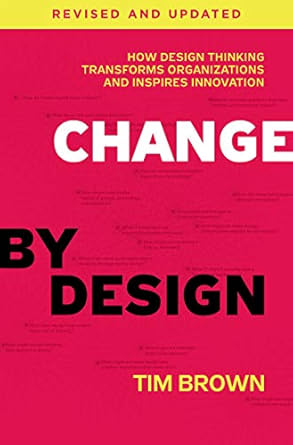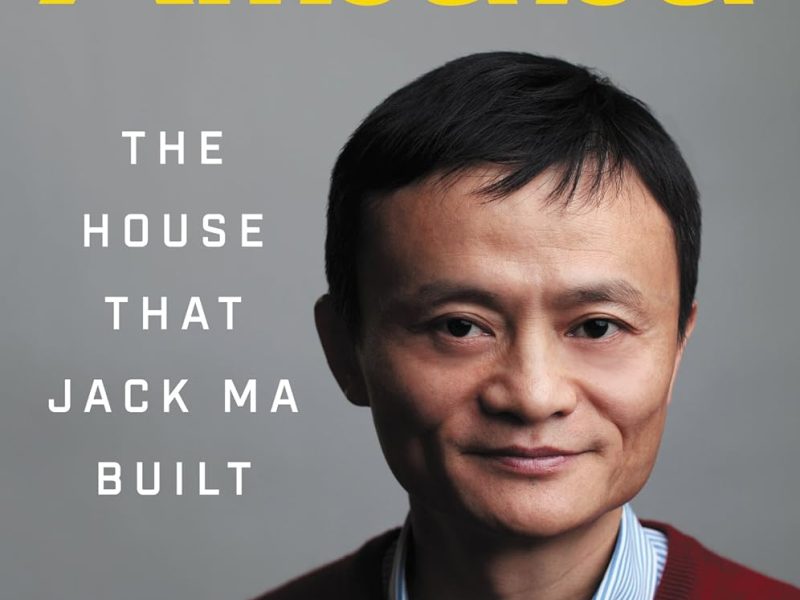How Design Thinking Transforms Organizations and Inspires Innovation
Tim Brown, CEO of IDEO, is a seminal figure who champions the widespread adoption of “design thinking” as a powerful approach to innovation and problem-solving, applicable across all sectors, not just traditional design fields. Brown argues that design thinking is a human-centered approach to innovation that draws from the designer‘s toolkit to integrate the needs of people, the possibilities of technology, and the requirements for business success.
The book is structured to first define and elaborate on design thinking, then discuss its application within corporations, and finally explore its broader societal impact.
Introduction: The Power of Design Thinking
Brown begins by introducing design thinking as a holistic, human-centered approach to innovation. He contrasts it with traditional problem-solving methods, which often prioritize efficiency and analytical rigor, sometimes at the expense of creativity and human insight. Design thinking, he asserts, moves beyond simply making things aesthetically pleasing; it’s about fundamentally changing the way organizations approach challenges and create value. It emphasizes empathy, ideation, experimentation, and iteration, drawing on the intuitive skills that designers have honed over decades.
The introduction sets the stage for a discussion on how this methodology can transform businesses and inspire new ways of thinking and working. Brown highlights that the power of design thinking lies in its ability to bridge the gap between abstract ideas and tangible solutions, fostering an environment where innovation is not just a buzzword but a continuous, practical process.
Part I: What is Design Thinking?
This first part of the book delves into the core principles and methodologies of design thinking, explaining what it entails and how it differs from conventional approaches.
Chapter 1: Getting Under Your Skin, or How Design Thinking is About More Than Style
Brown immediately dispels the common misconception that design is solely about aesthetics or styling. He argues that true design is about understanding human needs and desires, and then creating solutions that address them effectively and elegantly.
Design thinking, therefore, goes “under the skin” of a problem, delving deep into the human context to uncover latent needs and insights. It’s about empathy—stepping into the shoes of the end-user, observing their behaviors, listening to their stories, and understanding their frustrations and aspirations.
This foundational understanding allows designers to move beyond superficial fixes and develop solutions that are truly meaningful and impactful. Brown emphasizes that this process is messy, iterative, and requires a willingness to embrace ambiguity and learn from failure. It’s about creating things that people want, need, and enjoy using, leading to a deeper connection between products or services and their users.
Chapter 2: Converting Need into Demand, or Putting People First
This chapter focuses on the crucial link between identifying a human need and transforming it into a viable market demand. Brown posits that innovation is not just about inventing new technologies; it’s about finding human values that can be leveraged to create new markets or redefine existing ones.
Design thinkers start with people, observing them in their natural environments, listening to their stories, and uncovering both articulated and unarticulated needs. This human-centered approach ensures that solutions are genuinely desired and will be adopted by users. The chapter explores various methods for understanding user needs, such as ethnographic research, contextual inquiry, and persona development.
By putting people first, design thinking ensures that products and services are not just technically feasible and economically viable, but also inherently desirable. This desirability is what ultimately converts a perceived need into genuine market demand, driving successful innovation.
Chapter 3: A Mental Matrix, or “These People Have No Process!”
Brown addresses the common perception that design is an unstructured, chaotic activity. He introduces the “mental matrix” of design thinking, which, while not a rigid step-by-step process, provides a structured framework for creative problem-solving. This matrix emphasizes three overlapping spaces: Inspiration, Ideation, and Implementation.
- Inspiration: This phase involves identifying problems or opportunities that motivate the search for solutions. It’s about immersion in the problem space, conducting research, and gathering insights from users and stakeholders.
- Ideation: This is the process of generating, developing, and testing ideas. It’s characterized by brainstorming, prototyping, and rapid experimentation, where quantity of ideas is initially prioritized over quality.
- Implementation: This phase involves bringing ideas to fruition, scaling them, and making them accessible to the target market. It’s about refining the solutions, ensuring feasibility, and preparing for launch.
Brown stresses that these phases are not linear but highly iterative, with constant movement between them. He argues that this fluid, non-linear approach is precisely what allows for truly innovative solutions, as it encourages continuous learning and refinement.
The “no process” critique is rebutted by demonstrating that design thinking operates on a flexible, adaptive framework that leverages creativity and iterative feedback loops.
Chapter 4: Building to Think, or The Power of Prototyping
This chapter highlights the critical role of prototyping in design thinking. Brown argues that prototyping is not just about making a model to test an idea; it’s about “building to think.”
Prototypes are tangible representations of ideas, allowing designers to quickly test assumptions, gather feedback, and iterate on solutions. They can range from simple sketches and sticky notes to elaborate physical models and interactive digital simulations.
The power of prototyping lies in its ability to make abstract ideas concrete, allowing for rapid learning and validation with minimal investment. It encourages a “fail fast, fail cheap” mentality, where mistakes are seen as learning opportunities rather than setbacks.
By constantly prototyping, designers can refine their ideas, identify unforeseen challenges, and converge on solutions that truly meet user needs and business objectives.
Chapter 5: Returning to the Surface, or The Design of Experiences
Having explored the deeper aspects of understanding human needs and iterative development, Brown now discusses how design thinking eventually “returns to the surface” to focus on the overall experience.
This chapter emphasizes that in today’s service-oriented economy, the design of experiences is paramount. It’s no longer enough to just create a great product; the entire journey, from discovery and purchase to usage and after-sales support, must be thoughtfully designed. This involves considering all touchpoints a user has with a product or service, both physical and digital.
Brown advocates for “service design,” which applies design thinking principles to create seamless, holistic, and delightful experiences across various channels.
This includes mapping customer journeys, identifying pain points, and designing integrated solutions that deliver consistent value and satisfaction.
Chapter 6: Spreading the Message, or The Importance of Storytelling
In this chapter, Brown underscores the critical role of storytelling in design thinking. Once innovative solutions have been developed, they need to be effectively communicated and championed to gain buy-in from stakeholders, partners, and ultimately, users.
Storytelling is a powerful tool for conveying the vision, impact, and value of a design solution compellingly and memorably. Designers, Brown argues, must become skilled storytellers, able to articulate the human problem being solved, the journey of discovery, the proposed solution, and its potential benefits.
This involves crafting narratives that resonate emotionally, using visuals, and engaging the audience in the story of the design.
Effective storytelling can inspire action, overcome resistance, and rally support for innovative ideas, ensuring that great designs don’t just stay in the lab but are successfully implemented and embraced.
Part II: Where Do We Go From Here?
The second part of the book broadens the scope of design thinking, exploring its application beyond the design studio and into the realms of corporate strategy and societal challenges.
Chapter 7: Design Thinking Meets the Corporation, or Teaching to Fish
Brown discusses how design thinking can be integrated into the core operations of large organizations. He acknowledges that corporations, with their established processes and hierarchical structures, can be resistant to new methodologies.
However, he argues that design thinking provides a powerful framework for fostering innovation, driving growth, and adapting to rapidly changing market conditions.
The challenge lies in moving from isolated design projects to embedding design thinking principles throughout the organization—”teaching to fish” rather than simply delivering fish.
This involves building internal capabilities, fostering a culture of experimentation, empowering cross-functional teams, and encouraging leadership to embrace ambiguity and learn from failure.
Brown provides examples of companies that have successfully adopted design thinking to transform their product development, service delivery, and even organizational culture.
Chapter 8: The New Social Contract, or We’re All in This Together
This chapter extends the application of design thinking to address broader societal challenges. Brown argues that many of the world’s most pressing problems—such as healthcare, education, and poverty—are complex, human-centered issues that can benefit from a design thinking approach. He proposes a “new social contract” where designers, businesses, governments, and citizens collaborate to co-create solutions.
This involves shifting from a top-down, expert-driven approach to a more inclusive, participatory model where diverse perspectives are leveraged.
Design thinking encourages empathy for those affected by complex problems, iterative experimentation with potential solutions, and a focus on scalability and sustainability.
Brown provides compelling examples of how design thinking has been used to address social issues, demonstrating its potential to create positive change on a grand scale.
Chapter 9: Design Activism, or Inspiring Solutions with Global Potential
Building on the previous chapter, Brown further explores the concept of “design activism”—the application of design thinking to tackle global challenges and promote social good. He highlights instances where designers have taken the lead in addressing issues like access to clean water, sustainable energy, and improved sanitation in underserved communities.
This goes beyond traditional corporate innovation; it’s about using design as a force for positive social impact. Design activism often involves working with limited resources, understanding complex cultural contexts, and co-creating solutions with the communities they aim to serve.
Brown showcases inspiring projects that demonstrate how design thinking can lead to scalable and sustainable solutions that improve lives globally, fostering a sense of shared responsibility and collective action.
Chapter 10: Designing Tomorrow Today
In the concluding chapter, Brown offers a forward-looking perspective on the future of design thinking and its continued evolution. He emphasizes that design thinking is not a static methodology but a dynamic approach that will continue to adapt to new technologies, societal shifts, and global challenges.
He reiterates the importance of embracing a mindset of continuous learning, experimentation, and collaboration. Brown envisions a future where design thinking is not just a specialized skill but a fundamental capability for everyone, enabling individuals and organizations to navigate uncertainty, foster creativity, and shape a better future.
He encourages readers to adopt design thinking as a core competency, seeing it as an essential tool for “designing tomorrow today”—proactively shaping desired futures rather than simply reacting to circumstances. The book ends with a call to action, inspiring readers to apply design thinking in their own contexts, whether in business, social innovation, or personal endeavors.
Conclusion
In essence, “Change by Design” is a powerful testament to the transformative potential of design thinking. Tim Brown meticulously dismantles traditional notions of design, repositioning it as a versatile and potent tool for innovation that extends far beyond aesthetics. Through a compelling blend of theory, practical examples, and insightful case studies, he illustrates how a human-centered, iterative, and collaborative approach can unlock creativity, solve complex problems, and drive meaningful change in both corporate and societal contexts.
The book serves as a comprehensive guide for anyone seeking to embrace a more empathetic, experimental, and ultimately more effective way of thinking and creating.


